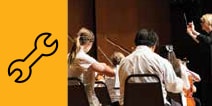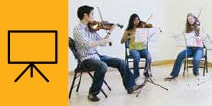-
Top 5 earmuff misconceptions.
May 10, 2019
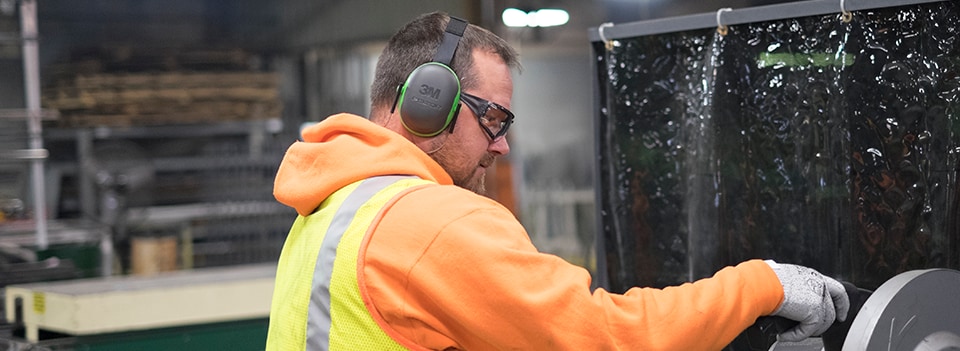

Top 5 earmuff misconceptions.
Earmuffs are a common form of hearing protection for workers across all industries. With versions that can be attached to hard hats and with an easy on and off design, earmuffs are favoured by many workers. However, while using earmuffs may seem simple, using them properly isn’t always as straightforward as people think. Many misconceptions exist around the use of earmuffs, which can result in improper use and lack of proper hearing protection in environments with hazardous noise.
3M is the leader in worker health and safety, which is why we’re shattering some of the most common earmuff myths to help workers protect their hearing.
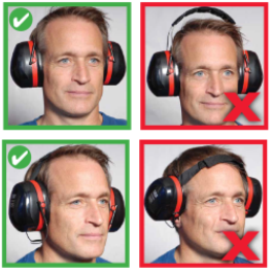
1. Myth: It’s impossible to wear my earmuffs incorrectly.
Reality: While it’s true that it is easier to correctly fit earmuffs than earplugs, not all styles of earmuffs are worn the same way and it is actually possible to wear them incorrectly.
Selecting a pair of earmuffs that fit properly depends on the other types of personal protective equipment (PPE) that are being worn with it. Wearing other pieces of PPE can compromise the seal of the earmuffs, which is what provides workers with the hearing protection they require. Types of PPE that should be considered when selecting a pair of earmuffs include hard hats, safety glasses, welding shields and hair nets.
2. Myth: There’s nothing wrong with wearing earmuffs over my hoodie.
Reality: Any type of headgear (including hoodies, baseball caps, hoods or hair nets) can interfere with the seal of the earmuff, causing a reduction or significant loss of hearing protection. A recent study conducted by Macedo, Gorman & Berger, 20161 revealed that the use of a fleece beanie under the headband earmuff resulted in a reduction of 12 dB of attenuation.
A properly worn earmuff fully encloses the ear and seals tightly against the head. Understanding the significance of the effects of other PPE in the level of protection provided by earmuffs can assist end users and occupational health and safety professionals in the selection of the most appropriate hearing protector.
3. Myth: Lifting my earmuffs every once in a while, won’t affect my hearing.
Reality: When hearing protectors aren’t worn properly for the duration of a shift in hazardous noise, a worker’s protection drops dramatically. Protection level is not proportional – any unprotected exposure is significant.
Protection is very dependent on wear time, attenuation is quickly degraded if you take hearing protection off. For example, wearing hearing protection for only seven hours out of an eight-hour shift causes protection to drop by two-thirds. When working in hazardous noise, workers are at risk of hearing loss every time they lift their earmuffs to speak to a co-worker, re-adjust their PPE, or even to cool down on a hot day.
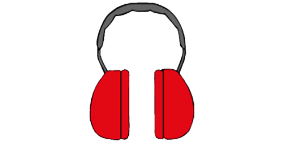
100% Usage
Worn for 8:00 hours provides maximum protection
99% Usage
Worn for 7:55 hours provides significantly reduced protection
90% Usage
Worn for 7.10 hours provides virtually no protection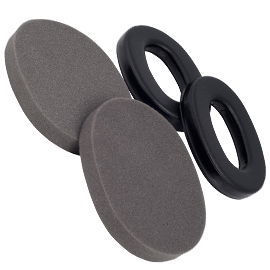
4. Myth: I don’t need to clean my earmuffs, they last forever.
Reality: Although earmuffs do not go inside the wearer’s ears, they should be cleaned on a regular basis to ensure hygienic use. How often earmuffs should be cleaned depends on the environment and whether or not they are shared with co-workers or used by one person. Caring for and cleaning your earmuffs is easy, and can be done with mild soap and water.
It is very important to check earmuffs on a regular basis for possible defects, like cracked cups; hardened, flattened or deformed cushions; leaking liquid-filled cushions and loose bands. Every time an earmuff is stretched open to be worn, the band tension is reduced, and the earmuff will eventually fail to provide a proper seal for the wearer’s ears.
3M recommends the replacement of the inner and outer foam seals of earmuffs every 3 to 6 months. Hygiene kits (pictured right) are available to allow workers to replace these components and to maintain acceptable noise reduction, hygiene and comfort.
5. Myth: My earmuffs can’t be fit tested.
Reality: 3M has a unique fit testing system that can objectively fit test earmuffs.
In addition to testing the seal of the earmuffs on their own, we recommend fit testing the earmuffs while wearing all pieces of PPE a worker would normally wear on the job. This allows the fit test to assess compatibility with all the safety gear being worn while working. Safety glasses and hard hats are two of the most common pieces of PPE that should be worn while fit testing earmuffs to ensure compatibility and a proper seal.
Request a free, on-site, no-obligation 3M™ E-A-Rfit™ Validation System demonstration and see how the E-A-Rfit™ Dual-Ear Validation System can help you and your hearing conservation program.
The centre for hearing conservation.
The 3M Centre for Hearing Conservation is a digital worker health and safety educational resource designed to help safety managers and other working professionals take a proactive approach to prevent occupational hearing loss. Occupational hearing loss prevention is an ongoing journey that requires continuous monitoring and flexibility to adapt to the evolving needs of the work site. However, to help create an effective hearing conservation program, that process can be broken down into smaller, more manageable parts - the seven elements of hearing conservation:
Start your hearing conservation journey today. Visit our Centre for Hearing Conservation and learn how to build and adapt a comprehensive hearing conservation program for your workplace. If you’d like more information about how to choose the right hearing protection for your workers please contact a 3M Safety Specialist.
References:
- Macedo, L., Gorman, T., & Berger, E. (2016) 'Assessment of the effects of various personal protective equipment (PPE) and apparel in the performance of earmuffs', Paper presented at the Australian Institute of Occupational Hygienists Inc. (AIOH) 34Th Annual Conference & Exhibition, 3 - 7 December 2016. Gold Coast, Queensland.

